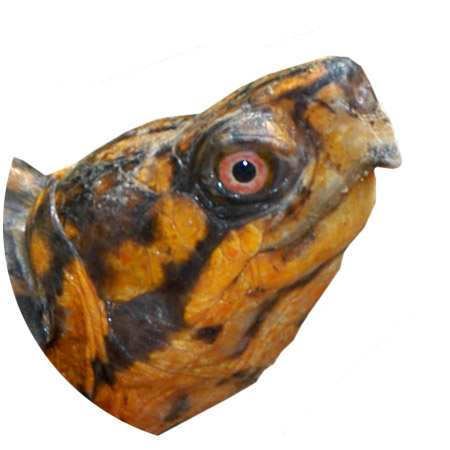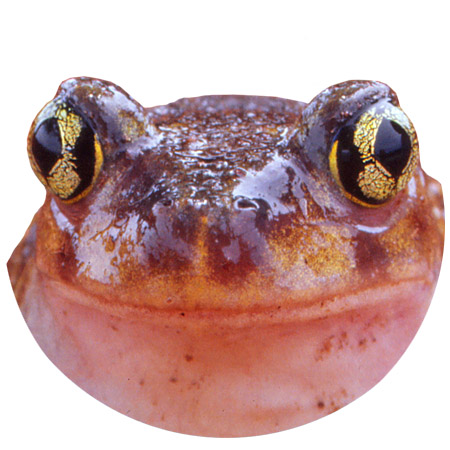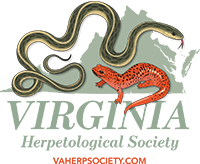Generating Field Notes
The field notes section of Catesbeiana provides a means for publishing
natural history information on Virginia’s amphibians and reptiles that does not lend itself to
full-length articles. Observations on geographic distribution, ecology, reproduction, phenology,
behavior, and other topics are welcomed.
Field Notes will usually concern a single species. The format of the reports is: scientific name (followed by common name in parentheses), state abbreviation (VA), county and location, date(s) of observation, observer(s), data and observations. The name(s) and address(es) of the author(s) should appear one line below the report. Consult the editor if your information does not readily fit this format. All field notes must include a brief statement explaining the significance of the record (e.g., new county record) orobservation (e.g., unusual or rarely observed behavior, extremely early or late seasonal record, abnormal coloration, etc.). Submissions that fail to include this information are subject to rejection. Relevant literature should be cited in the body of the text (see below Field Note proper format). All submissions will be reviewed by the editor (and one other person if deemed necessary) and revised as needed pending consultation with the author(s). If the field note contains information on a new county (or state) record, verification is required in the form of a voucher specimen deposited in a permanent museum (e.g., Virginia Museum of Natural History) or a photograph (print, slide, or digital image) or recording (cassette tape or digital recording of anuran calls) deposited in the archives of the Virginia Herpetological Society. Photographs and recordings should be sent to the editor for verification and archiving purposes; the identity of voucher specimens must be confirmed by a museum curator or other qualified person. Include the specimen number if it has been catalogued. Prospective authors of distribution reports should consult Mitchell and Reay (1999. Atlas of Amphibians and Reptiles in Virginia), Mitchell (1994. The Reptiles of Virginia), and Tobey (1985. Virginia’s Amphibians and Reptiles: A Distributional Survey), the VHS database as well as other recent literature to determine if they may have a new county record. New distribution records from large cities that formerly constituted counties (Chesapeake, Hampton, Newport News, Suffolk, and Virginia Beach) are acceptable, but records from smaller cities located within the boundaries of an adjoining county will only be published if the species has not been recorded from that county. Species identification for observational records (e.g., behavior) should be verified by a second person whenever possible.
Completed field notes should be sent to Paul Sattler at: pwsattle@liberty.edu
Example Fiieldnote:
Pseudemys rubiventris (Northern Red-bellied Cooter) VA:
Campbell Co., Lake Hydaway (38° 59’ 24.35”N 78° 18’ 45.19”W). 4 June 2008. Paul Sattler.
County Record: Large sized turtles had been observed for several years swimming and basking in
Lake Hydaway, a small lake or large pond, formed by damming a portion of Opossum Creek. In June
of 2008, I set turtle hoop traps to capture and identify this species. Baiting the trap with
sardines and canned green beans, I captured photographed and released an adult Red-bellied
Cooter. A digital photograph was taken of this animal which has been displayed on the VHS
website for Pseudemys rubiventris and was recently deposited in the VHS archive (#197).
There is a breeding population of Red-bellied Cooters in Lake Hydaway,
however, this is approximately 175 km west of the closest recorded population in Virginia
(Mitchell J.C. and K.K. Reay 1999, Atlas of Amphibians and Reptiles in Virginia. Special
Publication Number 1,Virginia Department of Game and Inland Fisheries, Richmond, VA 87pp.; and
Mitchell J.C. 1994, The Reptiles of Virginia. Smithsonian Institution Press, Washington DC. 352
pp.). This population is almost certainly introduced. Camp Hydaway is a church camp with a large
summer program for children, and Lake Hydaway is frequently fished by large numbers of local
residents. With such a large number of people using the facility it is likely that one or more
Red-bellied Turtles captured to the east were released into the Lake when they grew too
large.
Paul Sattler
Liberty University
Department of Biology
Lynchburg VA 24502


